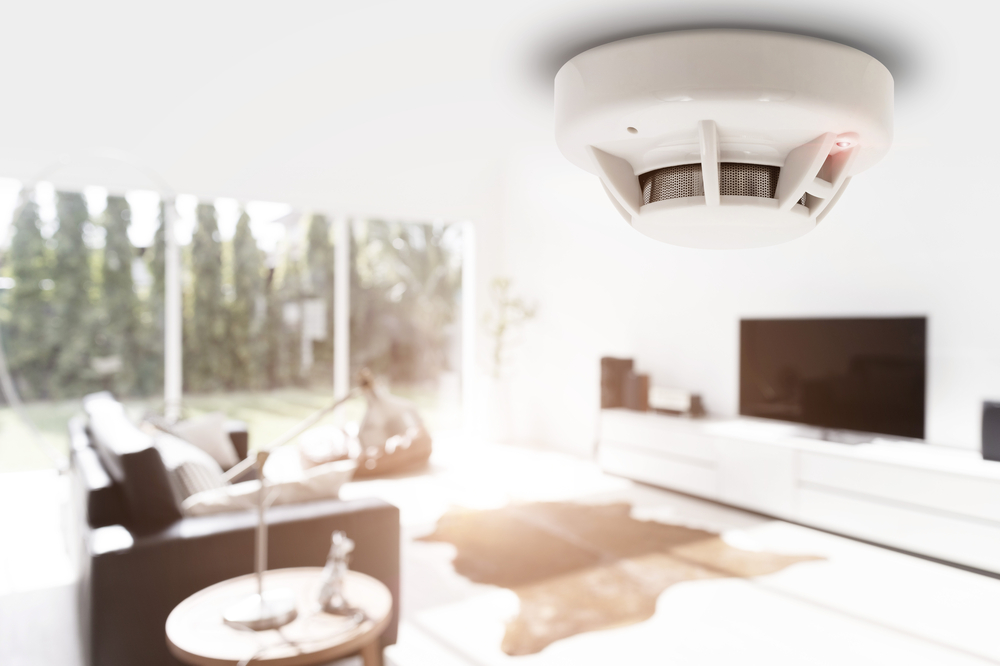In residential complexes, fire detection and alarm systems are crucial for protecting people and property. With the adoption of cutting-edge technology to increase accuracy, dependability, and response speed, the systems have undergone significant change. Fire detection systems are more important than ever in light of growing safety concerns and the growing trend toward smart home technologies. Their significance, technology developments, smart home compatibility, market trends, and regulatory considerations are all covered in this article.
Introduction to Fire Safety
Fires in residential buildings remain a significant concern. According to the National Fire Protection Association (NFPA), residential fires claim thousands of lives annually in the United States alone, with cooking, heating equipment, and electrical faults being the leading causes. Early detection is critical in reducing fatalities and minimizing property damage.
The Importance of Early Detection
Smoke detectors are a cornerstone of fire safety. They provide early warnings that allow occupants to evacuate safely and alert emergency responders promptly. The NFPA estimates that homes equipped with working smoke alarms cut the risk of fire-related deaths by half. However, traditional systems often face challenges like false alarms or limited functionality.
Current Challenges in Residential Fire Safety
Although they are good, conventional fire detection systems come with some draw backs. Misleading alarms created by cooking gases or steam render the system obsolete. Most systems also fail to integrate with other safety devices and hence lose value in case of an emergency. These drawbacks support the call for more sophisticated and efficient fire detection systems.
Technological Advancements in Fire Detection
New technologies in fire detection overcome many of the downsides of earlier systems. Latest devices use superior sensors, AI, and IoT technologies to become more accurate and functional.
Modern Sensors and Detection Methods
Multi-criterion detectors are an important innovation in fire detection. They integrate smoke, heat, and gas sensors to examine various environmental conditions all at once. In contrast to single-criterion detectors, they are able to differentiate between genuine fires and non-hazardous situations such as cooking odors or dust.
Machine learning and AI additionally boost detection by examining sensor data for patterns. They make systems capable of detecting specific fire signatures and eliminating false alarm. Machine learning, in the course of time, enables systems to learn to adapt to specific environmental conditions, thus making them more reliable.
Wireless and IoT Technologies
Wireless technologies have revolutionized fire detection systems by simplifying installation and maintenance. Wireless sensors eliminate the need for extensive wiring, making them ideal for retrofitting older homes or buildings with complex layouts. Additionally, IoT-enabled systems provide real-time monitoring and remote control via smartphones or cloud platforms. Homeowners can receive alerts and monitor their systems from anywhere, ensuring timely responses even when away from home.
Integration with Smart Home Systems
The rise of smart home technologies has transformed how fire detection systems operate. Integration with smart home platforms enables centralized control and automation, enhancing safety outcomes.
Centralized Control and Automation
Smart home integration allows fire detection systems to communicate with other devices in the home. For instance, upon detecting a fire, the system can automatically shut down HVAC units to prevent smoke spread or activate emergency lighting to aid evacuation. This level of automation ensures a coordinated response during emergencies.
Enhancing Safety through Smart Technologies
Smart fire detection systems offer personalized safety features that adapt to specific scenarios. For example, they can send customized evacuation instructions based on the location of the fire and the home’s layout. Remote alerts ensure that homeowners are notified immediately, even if they are not on-site.
Cloud-based platforms further enhance functionality by enabling remote monitoring and diagnostics. These systems provide real-time analytics on device performance, ensuring that maintenance issues are addressed promptly.
Market Trends and Regulatory Environment
The demand for advanced fire detection systems is growing rapidly due to technological advancements and increased awareness of safety needs.
Growing Demand for Smart Fire Safety Solutions
The global market for fire detection systems is expanding at a steady pace. Factors driving this growth include advancements in AI and IoT technologies, stricter building codes, and insurance incentives for homes equipped with modern safety systems. The integration of these technologies into smart home ecosystems has made them more appealing to consumers.
Compliance and Best Practices
Compliance with fire safety regulations is essential for ensuring system effectiveness. Standards like NFPA 72 outline requirements for the installation, maintenance, and operation of fire detection systems. Homeowners should ensure their systems meet these standards to maximize safety.
Best practices include regular testing of smoke detectors, replacing batteries annually for battery-powered units, and upgrading outdated systems to modern alternatives. Educating occupants about proper responses to alarms is also crucial for effective evacuation during emergencies.
Key Takeaway
Fire detection and alarm systems are indispensable for residential safety. By leveraging advanced sensors, AI algorithms, and IoT connectivity, these systems provide unparalleled protection against fires. Homeowners should prioritize upgrading their safety measures to take advantage of these innovations.
In an era where smart technology is becoming integral to daily life, embracing modern fire detection solutions is not just a choice but a necessity. Investing in these systems ensures peace of mind while protecting lives and property from one of the most devastating threats any household can face.



